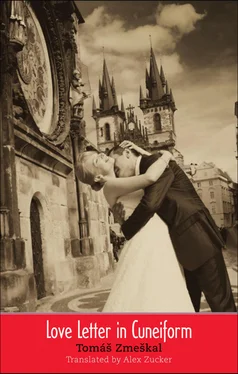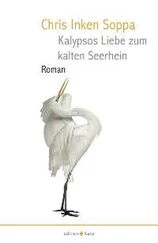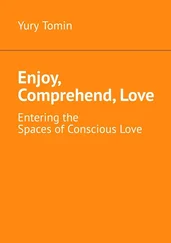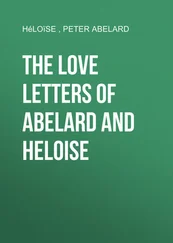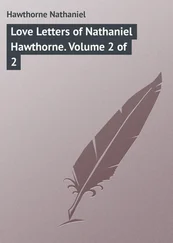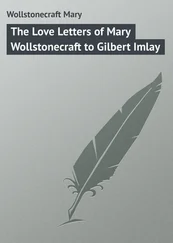After a studious analysis, the financial information unexpectedly turned out to be the most helpful to us. Reading through the balance sheets, one of our historians stumbled upon the astonishing fact that partial reconstruction of the device alone, performed by my great-grandfather a hundred and fifty years ago, cost far more than the rebuilding of the municipal sewers after the memorable seventeenth earthquake and the introduction of the extraplanetary network version 28.9 combined. This fact clearly demonstrated that the device in the tower was of irreplaceable value to our ancestors, and yet its meaning and purpose still eluded us. We were fumbling in the dark. Surprisingly, we weren’t too bothered, although naturally, in the evening, when we would retire to one of our city’s cozy little pubs, we were occasionally met with questions regarding the progress of repairs on the device. The information we had assembled thus far was inconsistent. In fact, each piece of information seemed to contradict all the others. Some accounts appeared to say the device offered the ability to display the human soul. Others claimed it could determine the true nature of an individual, a family, and, ultimately, even a whole city or society. In opposition to that were theories, perhaps best described as physical, that maintained that the whole device was originally designed by astronomers to gaze into the farthest depths of space and time. Other documents indicated that it had some function in determining the principles of justice, philosophy, law, and death. Some references suggested that at one point the device had been something like a living creature, actively involved in the running of the city. None of the sources were in agreement.
We decided to keep our visit to the device a secret and perform our inspection during a weeklong sporting event that typically absorbed the attention of most of the city’s inhabitants. In the middle of the week would be a decisive friendly match between our team and the neighboring country. That afternoon was an ideal time for our visit.
We set out with our recording instruments, souls brimming with courage and hope, and ascended to the third floor of city hall. We walked down a long narrow corridor hung with hand-painted portraits of the town fathers, dating back even farther than the last reconstruction of the device. As we walked down the hallway, it suddenly occurred to me that my great-grandfather must have passed through here more than a hundred and fifty years ago. He too must have looked at this line of grim-faced men in dark suits. Just how old the paintings were was obvious from the fact that not one of them portrayed a woman. Yet the device, as we all knew, was even older still. When we reached the end of the corridor, we opened the door and walked down a short flight of stairs, which brought us to another door, leading to the tower. It goes without saying that we were uneasy. Master Matthias and his assistant opened a trunk they had brought with them and took out some heavy iron objects, with which they commenced to open the door. The rest of us were quite baffled by this complicated system, which looked to us something like a ballet or athletic performance. They kept turning and turning the iron objects, which gave out a series of loud groans. Just as we were beginning to wonder whether Master Matthias and his assistant had overestimated their strength, the door swung open. We stepped inside and found ourselves in a hall with a vaulted ceiling. Master Matthias touched my hand and pointed upward: “That,” he said, “is a barrel vault.” I stopped for a moment, uncertain how to reply. Under the stairs that led up to the tower was a statue on a stone pedestal, a figure of a man with a rooster’s head and wings. His arms were outstretched, as if about to embrace us. His eyes were covered with tape. How prescient, I thought. People centuries ago had no conception of the possibilities of present-day genetic art, yet how accurate and far-reaching their vision was.
Subsequent research on the statue by the historian Eleanor at least partially revealed its meaning. She was the only one to notice that as we were leaving the tower the statue’s arms and wings were in a different position than when we had entered, and she brought it to our attention. The same thing happened on the other days we visited. Sometimes the statue’s lips were stretched into a smile, other times it wore an expression of disappointment, and at still others it was biting its lip with its wings wrapped around its body. As a thorough examination revealed the statue to be a solid bronze cast with no mechanism concealed within it, we took the statue’s changes of position and expression to be one of the many mysteries of the device and everything related to it. Eleanor discovered in the archives a reference to the fact that the tower had once been known as the Cock’s Tower and one of the earliest names for the device was the cock’s works. Researchers disagreed on the name’s origin, but the most convincing theory was that in the twilight of antiquity there had been a fortress on this site, a citadel called the Cock’s Nest, and the name Cock’s Tower had evolved from that. In this instance etymology, the science or art of words’ origins, gropes for an explanation. In the past it was written cockworks —in other words, obviously, cock’s works. Now at least we understood the importance of the man-cock statue: It was a symbol of the original Cock’s Tower and cock’s works, which our ancestors had placed there as a symbolic guardian. After further research Eleanor told us there was yet another name appearing several times in the same context that was perhaps even older than cockworks , which was clock . It meant nothing to any of us. The historical records were of no avail. The word clock is unknown today. Maybe there was a misinterpretation somewhere along the way, who knows? In any case, we decided not to use the word, as we couldn’t safely say what it related to or what it was meant to describe. Just as we don’t know what in fact the thing called a clock was supposed to have done. From all indications there was most likely an error in copying the word from one document to another, which led to the unusual and plainly mistaken name clock .
We switched on the lights and saw a few faded frescoes and some wooden benches along the walls. Past them was the staircase up to the tower. Master Matthias went first, followed by his assistant, and I went third. After several minutes of climbing, panting for breath, we arrived at another door. Master Matthias again applied his irons to the door, and we stepped into a large square hall occupying the entire floor space of the tower. We had reached our goal. Several tables stood pushed together in the middle of the room. Resting on top of them were wooden chests of various sizes, some painted with tableaux that were now quite cracked and worn, others inlaid with metal and various types of wood. There looked to be about sixty in all: roughly twenty large, five medium, and the rest small. Each chest had an opening for an iron, and after pausing a moment to catch their breath, Master Matthias and his assistant took out their irons and began opening all of the chests, one after the next. Inside the first was a set of iron gears wrapped in what looked like leather. The second contained mirrors; the next, drawings and books; and the next, particle accelerators and decelerators. We realized the device had been dismantled and placed in the chests for safekeeping. Once all of the chests had been opened, we gathered the contents together and catalogued everything. Two of the large trunks were full of books and papers, which we assumed were instructions for assembling the device. We couldn’t be sure, however, since the writing on the diagrams and in most of the books was in a language formerly spoken by scholars, probably the Páli dialect. One of the small chests also contained notes written by my great-grandfather. I couldn’t help but feel moved when my colleagues showed me. Some of the books and drawings were plagued with mold and falling apart, so it wasn’t simply a matter of assembling the device; in fact we would have to partially re-create it. In the course of this process we hoped that its meaning would be revealed to us. Thankfully, Eleanor was able to reconstruct one of the texts that seemed to us to be central:
Читать дальше
